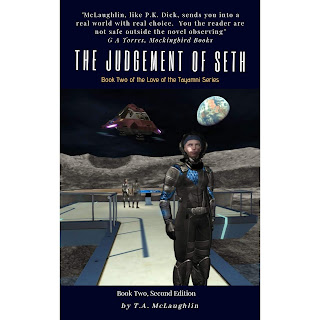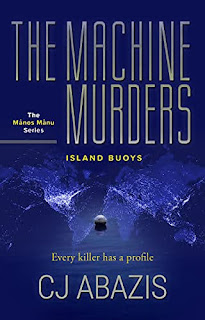New Book Alert: My Gift To The World: 24 Inventions & Ideas To Eradicate Poverty, Disease, Death, & The Energy Crisis by Kaloyan Valentin Danchev; The Start of Some Great Ideas
By Julie Sara Porter
Bookworm Reviews
It's amazing how often an idea has a huge impact on the entire world. The idea of combining soap with clean water helped to improve hygiene and eradicated many diseases. Sir Alexander Fleming's accidental discovery of penicillin led to the creation of antibiotics and vaccines that improve our health and help us live longer.
Charles Babbage and Ada Lovelace's invention and programming of the first computer, Tim Berner-Lee's creation of the World Wide Web, and Hedy Lamarr's invention of spectrum technology, the ancestor to WiFi, allowed us to scan information, be entertained, and make ourselves known to the world and even some to work from home to avoid office politics and filling already overcrowded traffic congested cities.
The automobile and airplane as well as things like traffic lights, stop signs, and air traffic control radar allow us to travel long distances and get there safely in one piece.
Devices like electricity, appliances, heating and air conditioning allow us to make our homes easy, clean, and comfortable places to live in.
For better or worse, our lives have changed by invention and every invention begins with a simple idea.
Entrepreneur and author, Kaloyan Valentin Danchev certainly believes this. That's why he not only has written the book My Gift To The World 24 Inventions & Ideas To Eradicate Poverty, Disease, Death & The Energy Crisis, but he is also presenting a contest for anyone who has such an idea or invention. Details and rules for the contest can be found at www.mygifttotheworld.org .*
Danchev's book presents the germs of his ideas in this thoughtful and intriguing book. The ideas presented vary from Vehicle, Aircraft, and Recreation Safety, to Media, Apps, and Gadgets, to Clothing and Hygiene, to Subscription Based Consumer Models, to Interactions of the Future. It's a wide variety of interesting possibilities.
Each chapter follows the same format. Danchev introduces two scenarios. One features a character with a problem. The other features another character with the same problem but using the idea or invention as a means to fix or improve the situation. Danchev then introduces statistics concerning the main concern and why this idea or invention could help. In a way, it's as though Danchev is pitching the product and us Readers are the panelists who have to decide on whether it could work or not.
The "Instant Vehicle Braking System" chapter is one such example. Danchev describes a scenario of a collision between a minivan driven by a harried mother and a Sedan with faulty brakes driven by a distracted driver. To contrast, he presents another scenario in which a driver's Instant Vehicle Braking System allows his car to stop within a few inches of hitting a tree. Then there are a few statistics of death and injuries in automobile accidents caused by faulty or neglected brakes. He then reveals his idea for a braking system that automatically goes into effect rather quickly.
Many of the Inventions and ideas are so obvious that it's a wonder why they weren't invented sooner. It makes perfect sense for a person's swimwear, athletic, and everyday wear to have "Instant Flotation Deployment Swimwear" installed into them especially, if they are visiting a beach or a lakeside or live near a swimming pool and are concerned about accidental drowning. Why wouldn't someone wear "High Heels Adjustment Modification" so they can adjust their footwear to be fashionable and professional for a job interview and comfortable and safe on their way to and from the interview?
Some of the best ideas come from the use of Media and Technology. The "Real News Network (RNN)/Good News Network (GNN)" is a much deserved lighthearted hopeful approach to the usual depressing landscape that surrounds the News. GNN would focus on helpful contributions that people have done to treat disease or provide services to the impoverished, or have won accolades for those achievements. These feel good stories would be the main focus of the network rather than be forced into the final five minutes of the nightly news program.
The chapter entitled "Cemeteries" suggests a more personal approach to the cold often times generic funeral industry. Danchev suggested that recorded messages, such as heartwarming anecdotes, birthday greetings, and sound advice could be put into the cemeteries so the bereaved can have personal conversations with their deceased love ones.
While Danchev presents some good ideas in theories, the practice might lead to further questions. After all, everything has positive and negative consequences. A "Data Pool App" for example could be useful in rating a person's good and bad behavior, but it also raises questions about lack of privacy and the motives of the person doing the rating. If someone doesn't like somebody, say a local celebrity or a person who is not politically affiliated with them, could they then be suspicious of that person's even good intentions purposely to give them a low behavioral rating? Does that give a potential interviewer even more power by giving them yet another reason not to hire somebody (as if searching their credit history, social media apps, and so on didn't give them enough information)?
Not to mention an episode of the Netflix Science Fiction anthology series, Black Mirror had an episode called "Nosedive" which explained why rating people online can be detrimental and do more potential harm rather than good.
I suppose Danchev is only presenting the idea and the negative potential options could be ironed out by further research, study, and interviews with focus groups.
But sometimes the idea itself could be called into question and that should be what potential Readers and especially contestants for this contest need to put into consideration before they present their ideas.
Despite the potential consequences, My Gift To The World is good for its purpose. It presents an idea for people to consider, think about, discuss, and maybe put to fruition. Maybe it will lead to more.
*The reviewer in no way is affiliated with nor endorses the My Gift To The World contest. I am only posting the link for informational purposes towards potential entrants.










